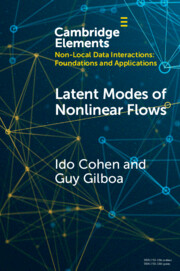Refine search
Actions for selected content:
5 results
Analyzing climate scenarios using dynamic mode decomposition with control
-
- Journal:
- Environmental Data Science / Volume 4 / 2025
- Published online by Cambridge University Press:
- 28 February 2025, e16
-
- Article
-
- You have access
- Open access
- HTML
- Export citation
Numerical simulation of the pressure characteristics of the pulsed jet actuator
-
- Journal:
- The Aeronautical Journal / Volume 128 / Issue 1323 / May 2024
- Published online by Cambridge University Press:
- 02 October 2023, pp. 896-910
-
- Article
- Export citation

Latent Modes of Nonlinear Flows
- A Koopman Theory Analysis
-
- Published online:
- 31 May 2023
- Print publication:
- 29 June 2023
-
- Element
- Export citation
Multi-resolution dynamic mode decomposition for damage detection in wind turbine gearboxes
- Part of
-
- Journal:
- Data-Centric Engineering / Volume 4 / 2023
- Published online by Cambridge University Press:
- 09 January 2023, e1
-
- Article
-
- You have access
- Open access
- HTML
- Export citation
Learning stable reduced-order models for hybrid twins
-
- Journal:
- Data-Centric Engineering / Volume 2 / 2021
- Published online by Cambridge University Press:
- 27 August 2021, e10
-
- Article
-
- You have access
- Open access
- HTML
- Export citation



